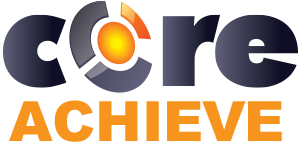Combatting Cognitive Bias in eLearning
January, 12 2023
Other posts:
Enhancing Team Dynamics for Effective Group Decision-Making with LMS Integration
Organizations increasingly rely on collaborative efforts to solve complex problems, innovate, and adapt to change, but how do we ensure that collaboration is happening.
Maximizing Small Business Potential with Training Technology
Training technologies can push small businesses ahead of their competitors, but what are the factors that go into choosing the right technology?
Unlocking Employee Potential: The Transformative Benefits of an Interactive Learning Management System (LMS)
Interactive training allows for unlocking employee potential, but how is it done?
Building a Robust Sales Pipeline with Training
Every organization wants a streamlined sales pipeline, but building one requires a series of interlocking activities with one of the most important being training.
Strategies for Adapting In-Person Training to Online Platforms
Online training is one of the most flexible ways of delivering training across organizations, but how do you even begin to adapt in-person training into online?
Cognitive Bias in eLearning: do you know why you believe what you do?
What is cognitive bias
While a bit of an oversimplification, a cognitive bias is a behavior that our brains unwittingly adopt despite there being no logical reason. While it might be easy to huff reading these believing that you could never fall victim to them, but it happens remarkably easily without taking a couple steps back to evaluate yourself.
That evaluation is easier and more often if one knows what to look for. Therefore, we compiled a list of the most common cognitive biases in eLearning.
What are the most common cognitive bias in eLearning
While there are so many cognitive biases, this brief list will only cover the most common ones in eLearning and how they might affect your training.
Anchoring Bias
Anchoring bias refers to the likelihood that a learner will increase the importance of the first piece of information that they are given about a topic. All new information is then framed in reference to that very first piece, making it an anchor. This naturally affects the objectivity of how we view information and can prevent your learners from fully beginning to grasp a topic.
Curse of Knowledge Bias
This bias mainly affects the instructors or content creators in eLearning, as it refers to the tendency for people to assume that whomever they’re dealing with has a same knowledge background. Obviously, this is not the case or else instruction wouldn’t be needed. Curse of knowledge goes further than mere assumption, some instructors can’t possibly see how people may not understand something. It’s as if they physically can’t see the world without their knowledge and that hampers their ability to help people get to their point.
Functional Fixedness
Functional fixedness refers to the bias of only seeing how an object work only in the way it is typically used. For example, a paperclip can only be used to temporarily attach papers together and nothing else. This bias can happen to both learners and instructors, as learners could limit their use of information or tools to the way they are taught whereas instructors could present information as right way or refuse to use eLearning tools creatively.
System Justification Bias
Perhaps the most self-forward, but undoubtedly one of the most impactful, system justification bias refers to the tendency for people to justify systems because it is the system. Therefore, the system must be the best one because it is the one, we settled on. Obviously not true or else we would still be in caves. Changes are inevitable and often make these systems more efficient. System justification may impact learner’s willingness to learn or a instructor’s quality, as they believe there is no reason to change, after all, to them, the system is perfect.
Dunning-Kruger Effect
The Dunning-Kruger effect is very popular, especially for how frustrating it can be. This refers to the tendency for people who know little about a topic to assume they know more than they do and the people who know more about said topic to assume they know less about it. The latter is more damaging to progress, as learners may do one or two dives into a topic then assume that there is no need for them to continue, stunting them.
Confirmation Bias
Confirmation bias is the most known, as people fall into this trap all the time. This bias happens whenever one takes new evidence or information as a confirmation of their already held theories. Slowing growth, confirmation bias is like the Dunning-Kruger effect as both prevent people from viewing themselves (and consequently) the world around them objectively. This will most likely affect learners, who will use new information to justify their beliefs. However, instructors can implant confirmation bias into the courses they make regardless of if it is truthful.
How do we combat them?
Unfortunately, there is no fool-proof way of ridding oneself of cognitive bias, after all, it’s prevalent for a reason. The best thing to do is encourage learners (either through assessments or making it a part of the course) to evaluate the information, how they viewed it, and why they viewed it that way. Introspection is difficult but knowing the cognitive biases enables criticizing your own thoughts.
As for instructors or authors, make sure you’re taking a couple steps back and viewing your content as objective as possible. Question why you framed things a certain way or the possible biases that can arrive from your content. Both take time and practice so don’t let either overwhelm you.
Get started with CoreAchieve for free.
Photo by Ryan Gagnon on Unsplash

Leave comment: